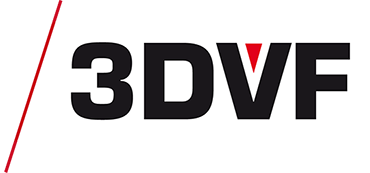Les personnes utilisant 3ds Max connaissent bien Particle Flow (PFlow pour les intimes), un outil de particules intéressant mais qui mériterait quelques améliorations.
Tyson Ibele, animateur à Toronto chez le studio Make, était manifestement lassé de l’état actuel de Particle Flow et a développé tyFlow, un outil de simulation de particules développé de façon indépendante d’Autodesk. Son but : « ramener 3ds Max au 21ème siècle », excusez du peu. Il est à voir comme une réécriture complète de Particle Flow, à partir de zéro.
Si tyFlow est encore en développement, on peut en voir les résultats sur son compte Instagram et plus bas, avec des tests prometteurs.
Une liste des fonctionnalités déjà en place est aussi proposée ; nous l’avons reprise ci-dessous. On retiendra le multithreading sur tous les opérateurs, l’arrivée de nombreux nouveaux opérateurs, des outils de fracturation, l’accélération de nombreuses fonctions (collisions, recherche des plus proches voisins, entre autres), davantage de contrôle ou encore du retiming pour les simulations.
* Every operator is fully multithreaded
* Tons of new operators, featuring things like a granular solver, cloth, rope, proper path follow, DLA growth, constraints, etc
* Spline operator and a super fast spline meshing modifier for converting particle trajectories/neighbors/constraints/etc into spline meshes
* Up-to-date PhysX support
* Voronoi fracture, brick fracture, boolean fracture, convex decomosition, etc, built-in
* All of PFlow’s terrible O(n^2) operations that make it totally unusable for productions have been properly accelerated (mesh collisions, nearest neighbor searches, surface lock/bond, etc)
* No more hidden PFlow operator/event nodes in the scene to manage, each flow is fully self-contained
* Tons of extra control has been added to all the base operators, and each operator has timing activation controls
* A C# script operator that executes nearly as fast as native c++ and that supports multithreaded scripts
* VRay instance rendering support, GPU instancing in the viewport (easily display 100s of millions of polys in the view no problem)
* Super fast auto-caching, similar to how Houdini caches things on the fly
* PhoenixFD grid support, PRT import/export
* Simulation retiming
* A custom file caching system that is often hundreds/thousands times smaller in file size than alternative systems like xMesh
Manifestement fier de son travail et critique envers le celui d’Autodesk, Tyson Ibele voit tyFlow comme « ce que serait devenu Particle Flow si le développement n’avait pas stoppé il y a une dizaine d’années ».
Une beta publique sera proposée ultérieurement, le temps de rajouter quelques fonctions indispensables.
D’ici là, vous pouvez découvrir les résultats des tests du développeur. Notez aussi, comme signalé par nos confrères de CGPress, qu’un sujet autour de Particle Flow est ouvert chez Autodesk : des utilisateurs réclament des améliorations sur Particle Flow, et certains suggèrent ouvertement à Autodesk de soutenir Tyson Ibele dans sa démarche.
Voir cette publication sur InstagramtyFlow voxels + PhoenixFD liquid + PhysX + colorize by velocity =
Chargement....

